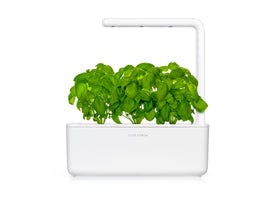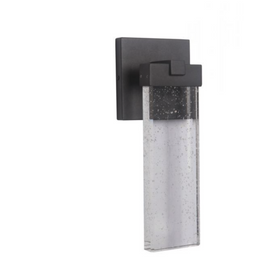
The Weeds You Shouldn't Be Killing
Last Updated: Mar 29, 2025With spring here, millions of homeowners across North America are visiting their local hardware stores to stock up on chemical herbicides to "win the war on weeds." Every year, Americans apply an estimated 80 million pounds of pesticides and herbicides to our lawns. Our children and pets are then exposed to these chemicals when playing in the resulting soft, weed-free grass.
Table of Contents
- What Are the Dangers of Pesticides?
- What Are Some Alternatives to Lawns?
- Can Weeds Benefit Us?
- What Weeds Provide Nutritional and Medicinal Advantages?
- What is a Dandelion?
- What Are the Health Benefits of Dandelions?
- What Is a Plantain Weed?
- What Are the Health Benefits of Plantain?
- What is Purslane?
- What Are the Health Benefits of Purslane?
- What Is Nettle?
- What Are the Health Benefits of Nettle?

What Are the Dangers of Pesticides?
One of the most popular lawn herbicides is known as 2,4-D (2,4-dichlorophenoxyacetic acid). This "weed and feed" product has recently been labeled as "possibly carcinogenic to humans." According to the Environmental Working Group, exposure to 2,4-D has also been associated with a higher risk of Parkinson's disease, immune system problems, and hypothyroidism. Similarly, the company formerly known as Monsanto (now Bayer) has also been facing thousands of Roundup weed killer cancer lawsuits.
Even though the most common lawn chemicals and weed killers are increasingly being linked with cancer and other serious health and environmental effects, homeowners keep using them. One recent market analysis found that the Turf & Ornamental Chemical Input Market expects a compound annual growth rate of 4.4 percent between 2019-2024.
It might be surprising to many homeowners that many of the weeds that these cancer-causing "lawn care" herbicides target are full of nutritional and medicinal properties. In contrast, that carefully manicured lawn might be leading your family into a host of health problems. So, allowing the weeds to flourish could result in a self-planted immune-boosting garden that can improve your health.

What Are Some Alternatives to Lawns?
There has been a considerable movement in recent years to convince individuals and homeowners to move away from monoculture turf grass lawns and healthier landscaping alternatives. Popular alternatives to lawns include permaculture design, prairie gardens, and xeriscaping, each with its own ecological and health benefits. All of these alternatives indeed represent an opportunity to create a thriving, health-oriented, and ecologically resilient landscape around our homes. However, a simpler (and less expensive) option might also be worth consideration.

Can Weeds Benefit Us?
Simply allowing the weeds to flourish might allow the spaces around homes to become populated by native vegetation, which is unfortunately commonly referred to as weeds. Many of these native species whose seeds have either lain dormant in the soil or that have arrived on the feet of birds, insects, and the wind, contain an enormous amount of health benefits.
Whereas cultivating tomatoes and other common garden crops might require your constant vigilance against pests and diseases, weeds are known for their rapid growth and resilience.
In today's article, we will take a look at some of the most common species of "weedy" vegetation that health-conscious homeowners should welcome into their yard. Almost every weed species plays an essential ecological role, especially when regenerating the soil ecosystem from years of chemical lawn abuse. But, this article will focus on the weeds that also offer nutritional or medicinal advantages for humans.

What Weeds Provide Nutritional and Medicinal Advantages?
Let's start with one of the most ubiquitous (and often despised) lawn weeds across North America: the dandelion. Why millions of homeowners have taken such a hating to this common yellow flower is a mystery to many. According to the University of Massachusetts Extension Turf Program, the dandelion is one of the most common plants in urban and suburban environments (meaning lawns). Of the $5 billion Americans spend every year on lawn chemicals, much is geared towards getting rid of the dandelion.
However, it wasn't always like this. Just a generation ago, homeowners and gardeners would intentionally plant dandelions in their gardens. Some seed catalogs would even sell dandelion seeds. County fairs would offer prizes for the best tasting plate of dandelion greens or the most potent dandelion wine.
What is a Dandelion?
The common dandelion, or Taraxacum officinale, is a herbaceous perennial flowering plant with yellow flowers. Each yellow flower is called a floret and is arranged in a circular pattern to create the flower head. The dandelion is a member of the Asteraceae family and can be found growing all over the world.
What Are the Health Benefits of Dandelions?
Both the roots, flowers, and leaves of dandelions are wholly edible and loaded with nutrition. The young and tender, spiky green leaves of the dandelion plants are significantly more nutritious than lettuce. They can be either eaten raw in a salad or cooked as with a plate of collard greens. They are an excellent source of vitamins A, C, and K and contain trace amounts of vitamin E, folate, and small amounts of other B vitamins.
The root of the dandelion plant can also be a source of food. Dandelion root has high amounts of the carbohydrate inulin. Inulin is a type of soluble fiber that plays an essential role in the growth and maintenance of healthy bacterial flora in your intestinal tract. Dandelion root can either be dried, boiled and drunk as tea or eaten as a potato substitute. You can also boil dandelion flowers can into tea or ferment them to make delicious wine.
In medicinal terms, all parts of the dandelion have high amounts of antioxidants. Bioactive compounds such as polyphenols in the plant can help reduce inflammation caused by various diseases. One recent peer-reviewed study found that long-term consumption of diets high in plant polyphenols offers protection against various illnesses, including the development of cancers, diabetes, cardiovascular diseases, osteoporosis, and neurodegenerative diseases.
The best part? You most likely will not have to do anything to bring dandelions into your yard. Dandelion seeds are easily spread long distances by the wind. Once you quit spraying potentially cancer-causing herbicides on your lawn, these cancer-preventing "weeds" will most likely begin to show up on their own.

What Is a Plantain Weed?
The plantain weed doesn't refer to the larger banana plant grown in tropical climates but rather to one of the most abundant yard weeds around North America. You have probably seen this pervasive plant growing in an abandoned corner of your yard or even in a small crack in asphalt pavement. The plantain weed has been esteemed for hundreds of years due to its pervasive presence and unique medicinal properties.

What Are the Health Benefits of Plantain?
The plantain plant has large, oval-shaped leaves that can either be eaten raw or cooked. As with dandelions, the plantain plant can help reduce inflammation due to its anti-inflammatory compounds like flavonoids, terpenoids, glycosides, and tannins found in the leaves. Other studies have found that plantain leaves might also play a role in slowing cancer cells' growth and proliferation. This is another example of how simple neglect can allow homeowners to convert their lawns from a potential cancer source to a garden of plants that help fight against cancers.
The plantain leaves can also be used as a natural way to heal wounds, especially when combined with aloe vera. Both the leaves and seeds of this plant might help calm several digestive issues, including inflammatory bowel disease. As with dandelions, these common medicinal herbs are often self-dispersed by birds and the wind. If you don't find any plantain plants growing in your yard, you can find these common seeds online.
What Are the Health Benefits of Purslane?
Among all the leafy green vegetables, purslane has the highest vitamin-A content. Nutritional studies have found that purslane's antioxidant value can play a role in vision health and that it can also protect from lung and oral cancer. A 3.5-ounce portion of purslane can also give you 35 percent of your daily Vitamin C needs. Purslane also has an abundance of healthy Omega-3 fatty acids, which play an important role in maintaining optimal cholesterol levels.
What Are the Health Benefits of Nettle?
When nettle is boiled or steeped as tea, the bristles and stinging chemicals are deactivated. The remaining leaves are highly nutritious and also offer a host of medicinal benefits. Nettle plants can help flush harmful bacteria from the urinary tract, thus preventing infections.
The stinging nettle plant is recommended by The Arthritis Foundation to help reduce the inflammation and pain associated with osteoarthritis. People who have diabetes or abnormal blood sugar levels might also benefit from letting a patch of nettle grow wild in the corner of your yard. A 2013 study found evidence that stinging nettle leaf extract lowered blood glucose HbA1c in a group of people with type 2 diabetes.
Tobias Roberts
Tobias runs an agroecology farm and a natural building collective in the mountains of El Salvador. He specializes in earthen construction methods and uses permaculture design methods to integrate structures into the sustainability of the landscape.













